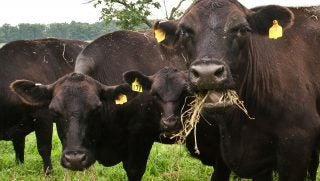Valentine’s Day is around the corner, and there is no lack of heart-shaped boxes of chocolates that will be given out to loved ones across the country. The holiday is one of the largest for chocolate sales, despite the commodity being riddled with controversy over labor and its environmental impact — approximately 2.8 billion Americans consume it each year. It’s a product that is in high demand, but its origination not widely known.
Cocoa beans are the main ingredient in chocolate and are farmed in three major regions; Latin America, West Africa, and Southeast Asia. In fact, 70 percent of the world’s cocoa beans are farmed in Ghana and the Ivory Coast. This crop provides income to more than 5 million families throughout the world.
Cocoa farming is achieved through the hard work and dedication of millions of small family farms.
The cocoa bean isn’t a highly profitable commodity, with most farmers living in poverty. This is due to the sensitivity of the cacao tree. According to cocoalife.org, “It requires high rainfall and temperatures to grow, as well as rainforest trees to offer shade and protection from too much light and damage caused by wind. Because cocoa farms are sensitive to this type of climate, they can only flourish in a narrow band of countries between 20 degrees north and south of the equator.”
The cacao tree crop is thusly protected from wind and sun, and growers manage the trees to prevent disease and distress. Trees begin yielding around four or five years old, and can produce for about 30 years.
Only making about 80 cents per day, cocoa farmers grow and harvest the crop by hand. Each pod of cocoa beans on a tree yields approximately 50 beans (400 beans are required to produce a pound of cocoa). The stalks are cut through with a sharpened blade, and the beans are removed using a wooden club, between seven and 10 days after harvesting. These beans are wet when harvested, and are placed in piles to ferment before drying out.
The beans must be piled together, or placed into a box to allow fermentation to proceed. Usually the piles are covered with banana leaves. The fermentation process can take anywhere from two to five days, and the length depends on the type of bean.
The fermentation process is complex, but the International Cocoa Organization explains:
It “begins with the growth of micro-organisms. In particular, yeasts grow on the pulp surrounding the beans. Insects, such as the Drosophila melanogaster or vinegar-fly, are probably responsible for the transfer of micro-organisms to the heaps of beans. The yeasts convert the sugars in the pulp surrounding the beans to ethanol. Bacteria then start to oxidise the ethanol to acetic acid and then to carbon dioxide and water, producing more heat and raising the temperature. The pulp starts to break down and drain away during the second day. In anaerobic conditions, the alcohol converts to lactic acid but, as the acetic acid more actively oxidises the alcohol to acetic acid, conditions become more aerobic and halt the activity of lactic acid. The temperature is raised to 40ºC – 45ºC during the first 48 hours of fermentation. In the remaining days, bacterial activity continues under increasing aeration conditions, as the pulp drains away and the temperature is maintained. The process of turning or mixing the beans increases aeration and consequently bacterial activity. The acetic acid and high temperatures kill the cocoa bean by the second day. The death of the bean causes cell walls to break down and previously segregated substances to mix. This allows complex chemical changes to take place in the bean such as enzyme activity, oxidation and the breakdown of proteins into amino acids. These chemical reactions cause the chocolate flavour and colour to develop.”
After fermentation, the beans are dried slowly from 60 percent moisture content down to 7.5 percent. This is done by sun drying, or with wood and fuel dryers. This process must be done carefully, so as not to ruin any good flavors. If drying is done too quickly, the bean flavor becomes too bitter-tasting; on the other hand, if dried too slowly, molds can grow.
When the beans have completed the drying process they are placed into sacks, mixed with other farms’ crops, and sold to many different buyers, which ship them across the world to different ports. They are then made into chocolate products!
While technology is working to catch up in order to improve cocoa harvesting and growing, there are still many challenges this industry faces. Even the most basic farming practices in other countries, such as drip irrigation, aren’t always utilized in this crop. However, there are many companies looking into modern technology, like bean-drying tech and data analytics, in order to achieve efficiency.
When consumers are out buying chocolate products, they aren’t just buying a sweet gift (no pun intended) for their loved one, they are also supporting small farmers!
Markie Hageman majored in agribusiness at Fort Hays State University. She is actively involved in her state Cattlemen’s Association, Young Farmers chapter, and National Cattlemen’s Beef Association. Her AGDAILY.com articles can be found here.



